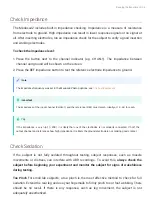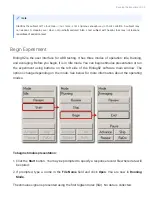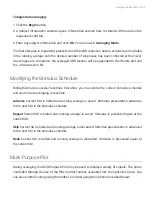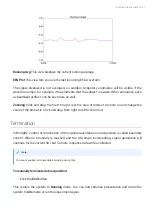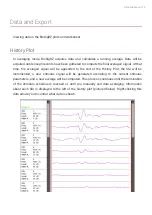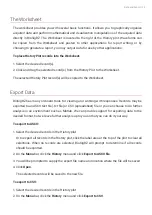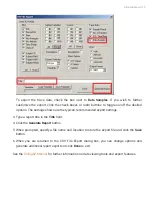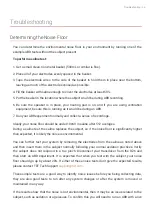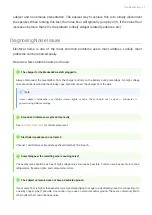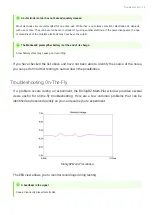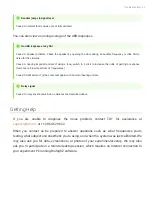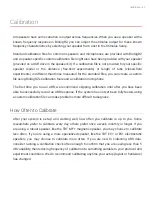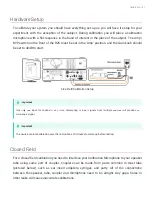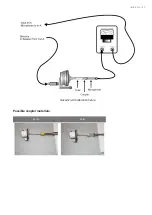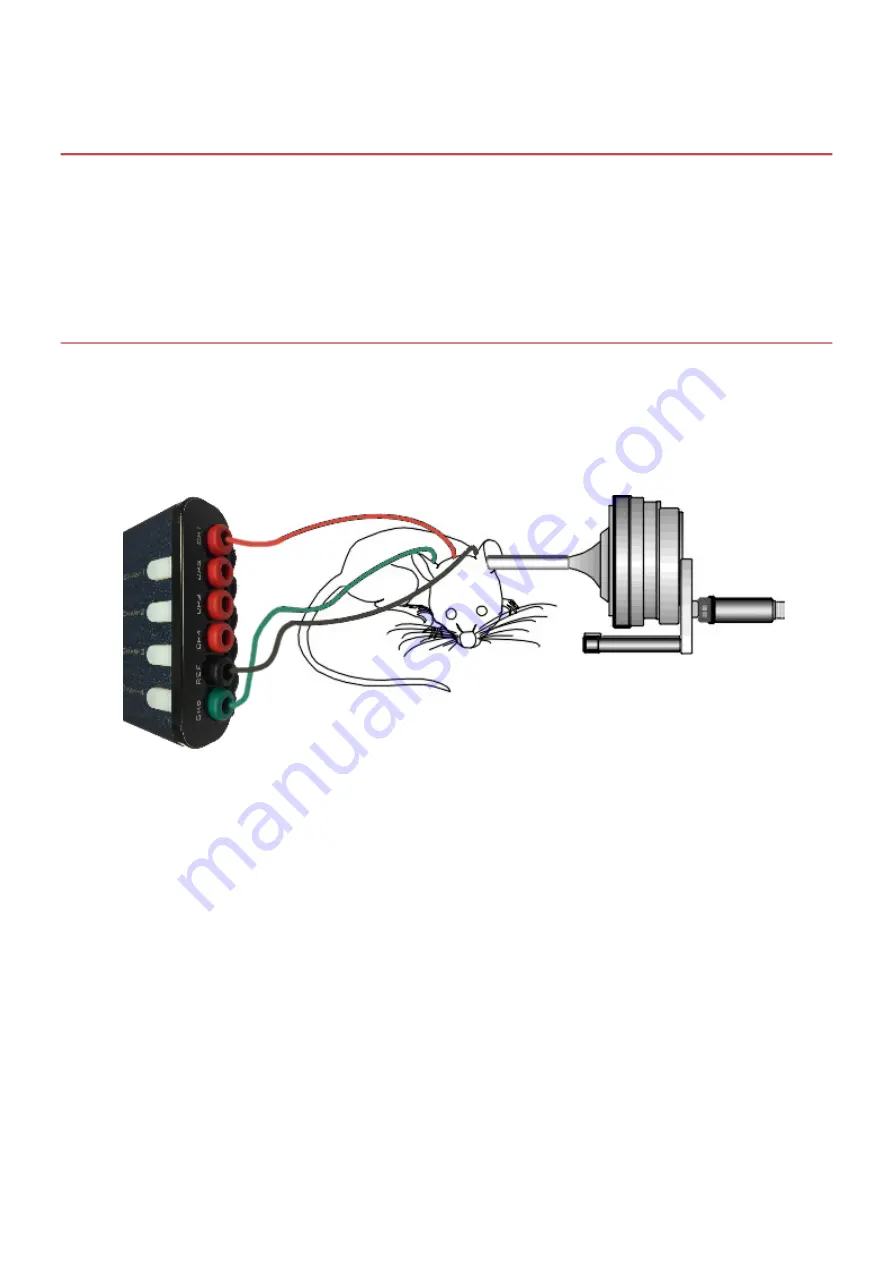
Running the Experiment
After you feel comfortable with the system, you can begin to collect data. We recommend
reading through the entire guide before using a live subject.
Electrode Placement
TDT can provide an electrode kit with suitable needle electrodes for ABR testing. One electrode
is required for each channel, plus one for Ground and one for Reference. The electrodes should
be inserted just under the skin and connected to the appropriate input on the Medusa4Z.
Correct placement is essential for acquiring good data.
For this single channel con
fi
guration, position electrodes as follows:
Channel 1
- Vertex (base of skull)
Reference
- Ipsilateral ear (same side as stimulus delivery)
Ground
- Contralateral ear (or hind hip or base of tail)
Running the Experiment | 27
















